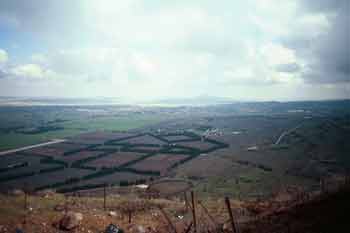David was no stranger to challenges in his life. He had been anointed king of Israel by Samuel, slain Goliath in battle and served in Saul’s court as his musician will ducking the spears sent his direction by the king. And yet, he knew the joy of God’s provision and protection in his life. He found a place of refuge from the attacks at Engedi.

 Engedi, “fount of the goat”, was his place of refuge. It is located just west of and above the Dead Sea in the Judean wilderness. A water fall sends water down through the canyon which is filled with a variety of trees, plants and wildlife drawn by the water and shade. It really is an oasis in the midst of a desert and was a place of
Engedi, “fount of the goat”, was his place of refuge. It is located just west of and above the Dead Sea in the Judean wilderness. A water fall sends water down through the canyon which is filled with a variety of trees, plants and wildlife drawn by the water and shade. It really is an oasis in the midst of a desert and was a place of
safety in the midst of David’s trials.
 David spent many days here in the wilderness as Saul pursued he and his men. It was a time of great trial and distress in his life. But, God had His purposes in allowing these trials to come. This season was God’s school of preparation for David as He built a man after His own heart. It was not fun. It was not easy. It certainly was not enjoyed by David and yet it yielded the peaceable fruit of righteousness in his life. This man became a worshiper of God as he penned songs of worship and praise during his times of isolation and trial. God calls him the Sweet Psalmist of Israel in scripture and that sweetness was developed through hard times.
David spent many days here in the wilderness as Saul pursued he and his men. It was a time of great trial and distress in his life. But, God had His purposes in allowing these trials to come. This season was God’s school of preparation for David as He built a man after His own heart. It was not fun. It was not easy. It certainly was not enjoyed by David and yet it yielded the peaceable fruit of righteousness in his life. This man became a worshiper of God as he penned songs of worship and praise during his times of isolation and trial. God calls him the Sweet Psalmist of Israel in scripture and that sweetness was developed through hard times.It has been said that the trials of life will make us bitter or better. It is a choice that each of us must make. The trials will come. The attacks will happen. The discouragement will beset us. Then, we will have to make a choice. David chose well. He pressed into God. He cried out to the Lover of his Soul and God ministered to him every time.
Perhaps you find yourself in the time of trial. Things or people are coming down on you. The pressure seems overwhelming. You have a choice to make. You need to know that the God of David has not changed. He is there for you to call on during this time. He promises that the things He brings or allows in your life will not overwhelm or overcome you as you walk with Him. His purpose is to conform you into the image of Christ. That is not an easy process. We often don’t want to let go of the things God is trying to pry out of our lives. But when we finally let go, there is a tremendous freedom and blessing discovered through our obedience to God.
 Find your Engedi, your place of refuge. Spend time crying out to God and He will meet you there. Remember, God is on your side! I say to you, Be of good courage, and he shall strengthen your heart, all ye that hope in the LORD. Psalm 31:24 He will never leave you nor forsake you. And, let me know if I can be of any help.
Find your Engedi, your place of refuge. Spend time crying out to God and He will meet you there. Remember, God is on your side! I say to you, Be of good courage, and he shall strengthen your heart, all ye that hope in the LORD. Psalm 31:24 He will never leave you nor forsake you. And, let me know if I can be of any help.Blessings in the name of Yeshua HaMaschiach!






















